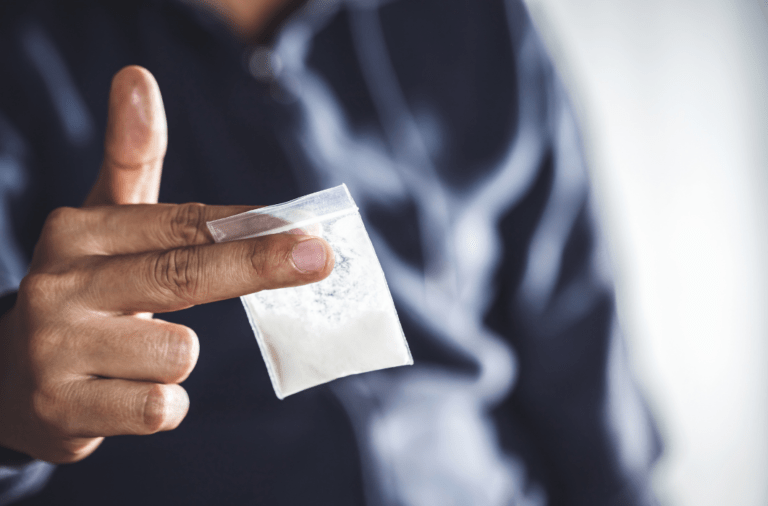If you or someone you love struggles with alcoholism, whether in recovery or working toward it, you’ve probably heard of the four stages of alcoholism. The four stages of alcoholism help to identify where an alcoholic is.
The fact of the matter is, alcoholism doesn’t develop overnight. It can take months, or even years for someone to develop from stage one to stage four. Some people may seek help before reaching stage four, while others may not seek treatment until an outside source encourages them after being in stage four for a long time. Others might reach a breaking point or seriously hurt themselves before they decide it’s time to seek treatment. It’s different for everyone.
To learn more about the four stages of alcoholism, how to identify each stage, and how to get help for yourself or a loved one struggling with alcohol use disorder (AUD), keep reading.
Who Created the Four Stages of Alcoholism?
The four stages as a system were developed by Morton Jellinek, a scientist who put a lot of work and research into the study of alcoholism and has helped the world better understand it in present times. He created the four stages by performing a study on members of Alcoholics Anonymous, proposing that the drinking problems follow a variety of steps or stages that lead to the drinker’s decline in health and addiction.
In 1952 he published a paper titled, “Phases of Alcohol Addiction” that built upon his original ideas published in 1946. He outlined the four stages of alcoholism as:
- Pre-Alcoholic Stage
- Early-Stage Alcoholism
- Middle Alcoholic Phase
- End-Stage Alcoholism
Stage One: Pre-Alcoholic Stage
The pre-alcoholic stage is the most common and occurs in most people, as it occurs before drinking becomes a real problem. Many people in this stage don’t realize that their drinking could become a problem in the future and are unable to realize that they’re progressing on to something that may be more serious.
People go in two different directions after this stage. They either find alternative coping mechanisms to drinking and begin to treat their afflictions in a healthy way, or they continue drinking and using alcohol as a coping mechanism, causing them to fall deeper into alcoholism.
Identifying this stage can be difficult, but be on the lookout for warning signs such as:
- Using alcohol to unwind or fall asleep
- Drinking in order to feel comfortable in social situations
- Using alcohol as a way to cope with mental health issues or difficult feelings
Stage Two: Early-Stage Alcoholism
During this stage, people begin binge drinking, meaning they’ll start to consume more alcohol at once. This occurs because their tolerance increases and they need to drink more in order to achieve the same effect. During this time, people may also begin to blackout more and more.
Binge drinking is defined as having four drinks or more in two hours for women or having five drinks or more in two hours for men. People binge drink in order to achieve maximum drunkenness within a short period of time, which is troubling on its own.
While binge drinking might be common amongst adolescents and young adults experimenting with alcohol for the first time, it’s still considered early-stage alcoholism, especially in those who binge drink multiple nights per week.
People in this stage may not drink every single day, but they might find it difficult to go out on the town or have a social evening with friends without getting blackout drunk or consuming too much in too little time. Other warning signs to look out for include:
- A hard time controlling the amount consumed
- Saying they’ll stop or cut back, but having a difficult time doing so
- Blacking out
Stage Three: Middle Alcoholic Phase
During the middle alcoholic phase, people around you will likely start to take notice of your drinking habits as they begin to interfere with your everyday life. Of course, alcohol addictions heavily affect the addict, but it also affects all the people around them as well.
Addicts might find excuses to dismiss their behaviors or lie to keep people from finding out how much they’ve been drinking. This stage is known for harming a lot of relationships, as addicts will struggle more and more to keep their lives together during this time.
During this stage, it may also feel impossible for them to stop drinking and they may drink more frequently than before. Instead of only consuming alcohol when they’re out or at night, they may begin drinking during the day as well.
Warning signs of people in stage three include:
- Increased irritability
- Missing work or school
- Putting drinking ahead of their friends and family members
Stage Four: End-Stage Alcoholism
In stage four, end-stage alcoholism, the amount of alcohol you’ve consumed will start to catch up with you, having a large impact on your health. During this time, drinking will become an all-day affair and it will likely feel impossible to do anything else. When you don’t drink, you experience withdrawal symptoms that make drinking even more tempting. At this point, it feels impossible to stop, even if you want to.
Many people have extreme trouble maintaining their lives at all during this point, missing school, work, and having trouble paying bills or maintaining any responsibility of any kind. Treatment is an absolute necessity at this point.
Warning signs of end-stage alcoholism include:
- Not remembering large parts of your day or week
- Not being able to stop drinking
- Experiencing intense withdrawal symptoms when attempting to quit
- Being drunk nearly 24/7
Seeking Treatment After Realizing You Have a Problem
Treatment is most effective in the middle alcoholic stage when people haven’t hit absolute rock bottom yet. Out of the four stages, people in the third stage most frequently are able to realize that they have a problem before it gets too far. However, treatment is possible for people in all stages of alcoholism. To learn more about the treatment programs at Asheville Recovery Center and how we can help you get and stay sober, call us today.








